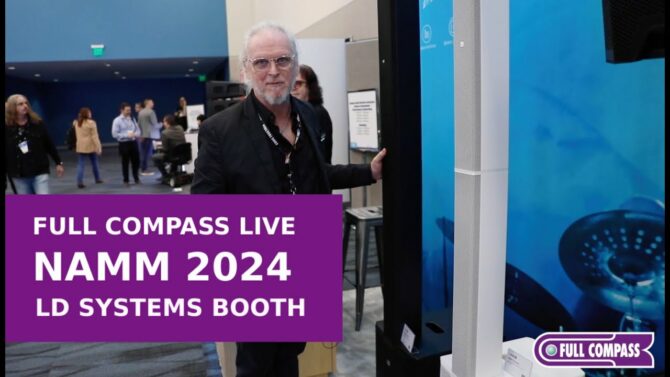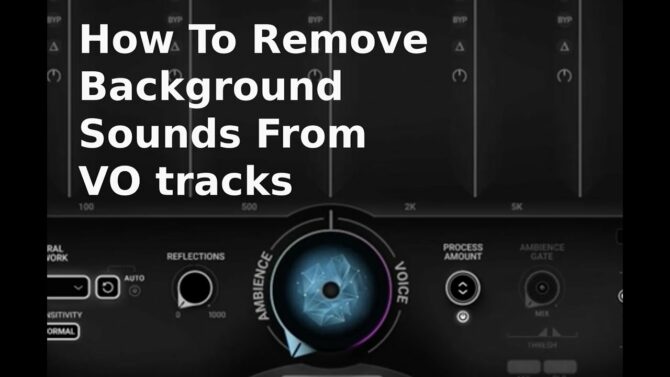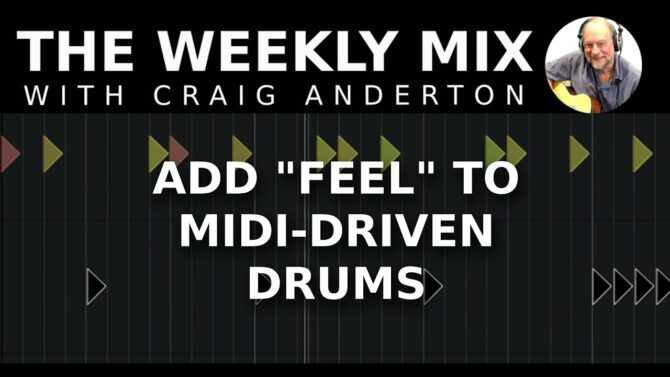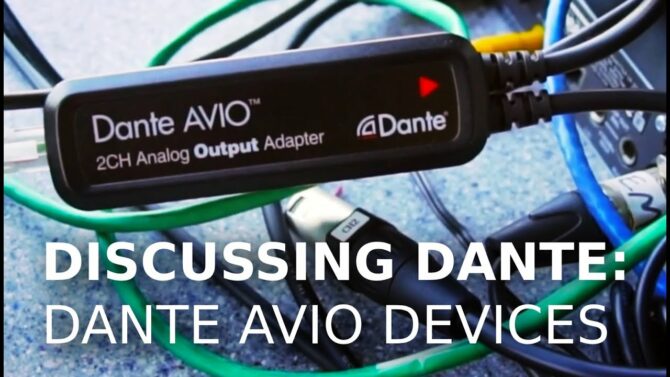Sort out the confusion, and find out what’s best for you!
Years ago, music industry pundits were predicting that virtual synthesizers that run on computers would replace physical hardware synths. Yet not only have hardware synths refused to go away, they’re having somewhat of a renaissance. Hardware keyboards can be manufactured more cost-effectively than ever, products like arranger keyboards benefit greatly from physical controls, and there’s a renewed interest in analog-based synthesizers.
But when you’re looking for a keyboard, how do you choose the one that’s right for you? There are full-blown workstations that are almost like mini-recording studios, portable keyboards, arranger keyboards, separate tone modules and MIDI controllers to play them...the choices can be overwhelming, so let’s explore the options.
Self-Contained Keyboards vs. Modular
There are two main keyboard options. Self-contained models package the keyboard itself, connectors, controls (including controls for adding expressiveness, like a pitch bend Definition:
Definition:
To slide smoothly over time through all frequencies between a note of one pitch and a note of another pitch. See also: Pitch. controller Definition:
Definition:
1. A MIDI device (keyboard, guitar with appropriate interface, etc.) that alters parameters in a synthesizer or other MIDI sound generator. 2. A device (e.g., modulation wheel, pitch bender, ribbon controller, etc.) that varies some specific parameter in a synthesizer or other MIDI sound generator.), and all associated tone-generation circuitry as an integrated unit. Within this category, there are sub-divisions as well.
- Stage pianos used to be just portable pianos, like Fender Rhodes, Wurlitzer, etc. pianos. Thanks to new technology, they now tend to include other common sounds for stage use like strings, bass, brass, and the like. They may have some rudimentary ways to record music, but that’s not the primary goal—the main design goals are portability, simple setup, ease of use live
 Definition:
Definition:
Live broadcast of an event or program without substantial delay or editing., and roadworthiness. The Nord Piano 4 (Fig. 1) is a good example of this type of keyboard.
Figure 1: Swedish company Nord is a prominent stage piano manufacturer. The Nord Piano 4 has 88 keys, and a sample playback engine to create additional sounds along with piano. - Workstations are designed for both studio and stage. They often include features for which people use computers, such as a multitrack
 Definition:
Definition:
A recorder that can record more than one individual track at a time, or individual tracks in sequence for subsequent mixing. sequencer that allows building up entire compositions within the keyboard. Some can even record audio to internal memory, or to an external hard drive. In some ways, a workstation can be almost like a “Studio B.” Popular workstations include the Yamaha Montage series, Roland FA-08 and FA-07, and the Korg Kronos family (Fig. 2).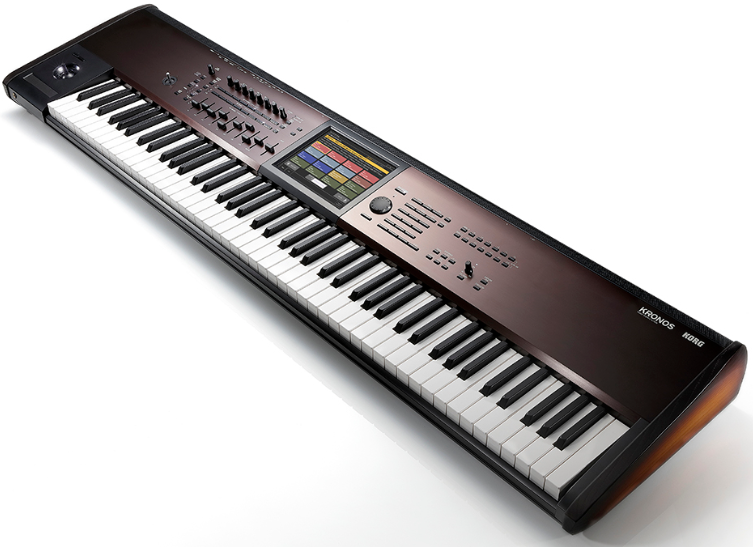
Figure 2: The Korg Kronos LS is a lighter-weight version of the Kronos 8 that’s suitable for stage and studio, and also features nine independent sound generating engines. - Arranger keyboards are an ideal solution for solo acts and the home. They offer a variety of musical genres and styles, and make it easy to build up full accompaniments using functions like automatic chord generation, drum backing tracks, and the like (Fig. 3).
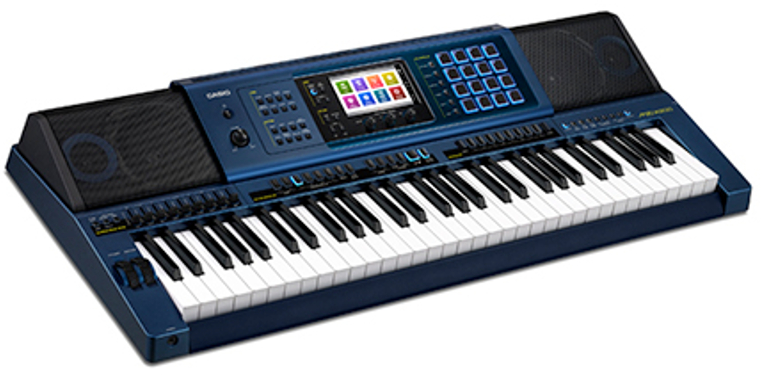
Figure 3: Casio’s MZ-X500 includes a 16-track MIDI recorder, along with patterns and rhythms representing a comprehensive variety of musical genres and styles.
A modular setup includes a separate master controller keyboard (like the Native Instruments Komplete Kontrol keyboard or Roland A800 Pro-R), and one or more tone generator modules that connect via a MIDI Definition:
Definition:
(Musical Instrument Digital Interface) A hardware/software standard for communication of musical data digitally among electronic instruments, effects, and computers. However it is also used for to control lighting, pyrotechnics, theatrical displays, and mechanical devices. For example, the fountains at the Bellagio in Las Vegas is controlled by MIDI. Also called MIDI 1.0. (or sometimes USB Definition:
Definition:
(Universal Serial Bus) A standard, bi-directional serial connection between computers and peripheral devices.) cable. The master keyboard (Fig. 4) usually doesn’t make sounds, and is designed specifically to control hardware sound generators or computer-based, virtual instruments.

The controller’s MIDI output transmits a digitally-encoded version of what you play on the keyboard. The tone module’s MIDI input responds to this data Definition:
Definition:
Information used by a computer in order to arrive at a decision. Although this is a plural term, it's often treated in the singular., and plays the appropriate notes. One of the advantages of a modular setup is that you can mix and match tone modules to obtain different sounds.
Modular setups are also the usual setup of choice for non-keyboard controllers, like MIDI drum pads, guitar or bass outfitted with a MIDI-compatible Definition:
Definition:
Capable of operating with a particular selection of hardware or software. pickup Definition:
Definition:
1. Transducer attached to a musical instrument that converts mechanical vibrations into an electrical signal for recording or amplification. 2. The part of a phonograph that translates mechanical motion from grooves into electrical signals for subsequent amplification., strap-on remote keyboards you wear like a guitar, or new types of controllers like the amazing ROLI Seaboard Rise 49 (Fig. 6). If you’re not a traditional keyboardist, why pay for a keyboard you won’t use?
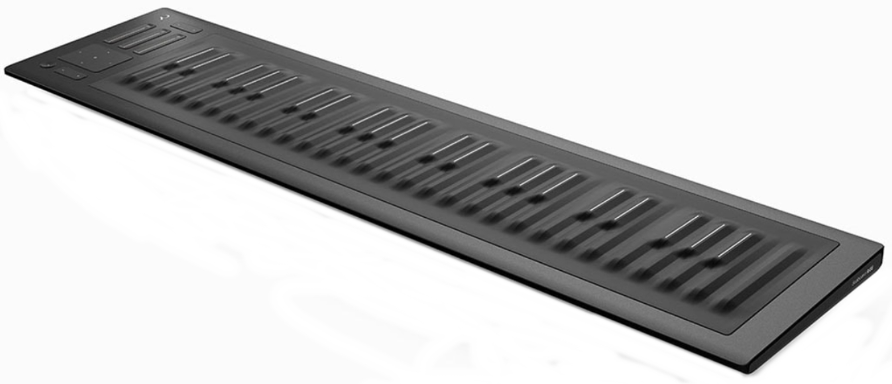
Also note these are not tightly defined categories, and there’s some degree of crossover. For example, a stage piano often has a MIDI out that can drive additional tone modules to expand the sound, and a workstation can be a natural for the stage. A stage piano might double as a piano for the home.
Synthesizer Tone Generators
If you go the controller route, there are several tone generator options. Note that these require some MIDI savvy, because you need to route your MIDI controller Definition:
Definition:
Keyboards, drum pads, wind controllers, guitar controllers, and other physical devices that allow human control over synths and samplers. See: MIDI. to the synths and set their respective properties correctly. This isn’t a big deal, but all-in-one keyboards are “plug and play.”
- Rack units. These fit into rack frames and are a traditional option for tone modules, although they’re not as common as they once were. Because of the rack configuration, you can stack several units on top of each other to create a compact setup with a lot of sounds (Fig. 6).

Fig. 6: Yamaha’s MOTIF XS rack packages the Motif XS synthesizer’s sound set, with 1,152 voices and 65 sound sets, into a compact rack format. - Tabletop units. As you might expect, these sit on a table and are easy to tweak
 Definition:
Definition:
1. To make minor adjustments. 2. A person who is a perfectionist.. Although these have no keyboard, set them up next to your keyboard or other MIDI controller, and you’ll have plenty of options for real-time sound tweaking (Fig. 7).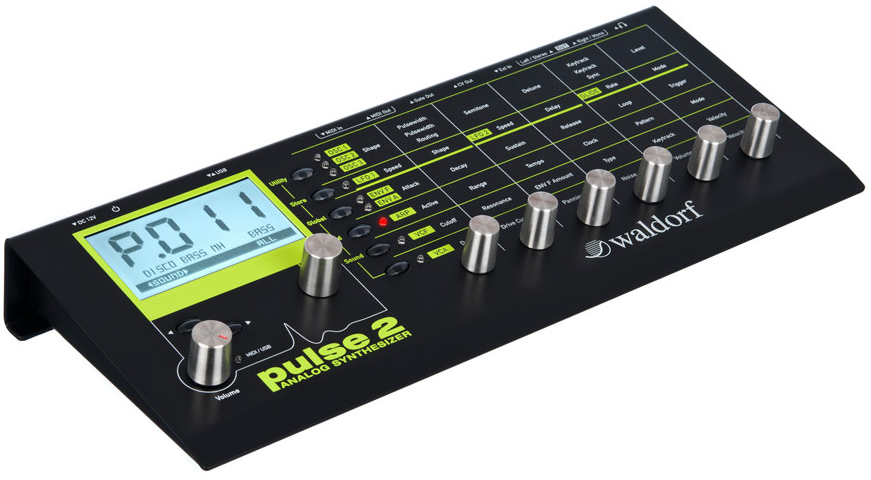
Figure 7: Waldorf Music’s Pulse-2 is a tone module based on analog synthesis technology, not a digital “virtual analog” sound engine, and includes three analog oscillators. A variation on the tabletop unit, the “groove box” (exemplified by the Akai MPC series) is designed primarily for groove-based music like dance, hip-hop, rap, and EDM
 Definition:
Definition:
EDM (Electronic Dance Music): A form of music, highly dependent on electronics and synthesis, and played mostly at clubs and dance parties.. While somewhat more like an overachieving drum machine Definition:
Definition:
A device that combines sequencing and analog or sampled drum sounds to allow musicians to program repetitive drum patterns. Intended to sound at least somewhat like a human drummer., a groove box has much in common with synthesizers. - Modular synthesizers. These were once an endangered species, but have made a comeback with sound designers, electronic-oriented performers, and others. Modular synths consist of a variety of modules mounted in a frame (Fig. 8), and there’s a do-it-yourself element involved in choosing the modules (or adding to an existing set of modules).

Figure 8: Roland’s SYS-500CS is a fully analog modular synthesizer, with multiple oscillators, filters, and effects, that’s compatible with the Eurorack format. - Computer-based. Your computer—laptop, desktop, or tablet—can host virtual synthesizers (Fig. 9). These are inexpensive compared to hardware and are easy to edit with the computer’s screen. Your controller may also be able to vary the “virtual knobs” with hardware knobs or sliders. In addition, you’ll need an audio interface
 Definition:
Definition:
A device to convert audio signals into digital code suitable for use by a computer; typically communication occurs through a port such as USB, Thunderbolt, FireWire, etc. to play back the computer-generated audio with reasonable quality, and of course, getting a computer involved means updating, backing up, and the like.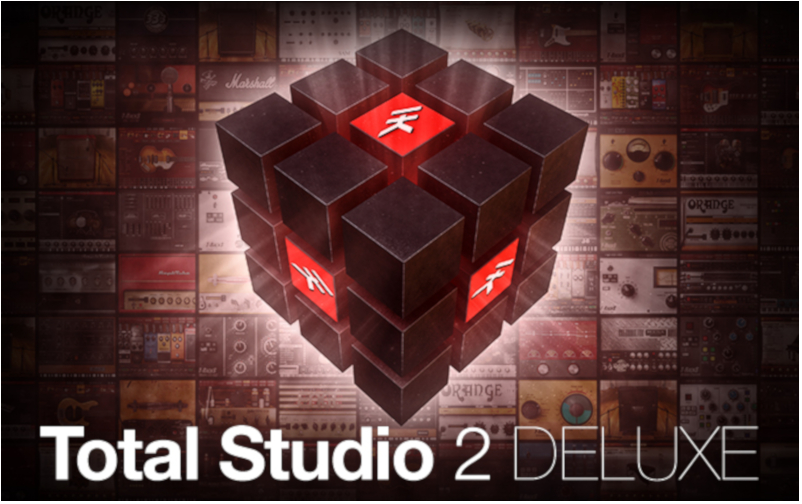
Figure 9: IK Multimedia’s Total Studio 2 Deluxe offers five virtual instruments, including SampleTank and Miroslav Philharmonik, as well as effects and amp simulation.
Keyboard Action and Size
Whether you choose an all-in-one keyboard or controller, the keyboard’s “feel” matters. Also, keyboards come in various sizes; you may or may not be able to fit an 88-note keyboard in your house or studio.
- Weighted keyboards, where the keys offer a slight resistance to your playing, feel more like a traditional piano. Some even reduce the resistance as the notes get higher, just like a physical piano.
- Unweighted keyboards are common on synthesizers, and are preferred by many players because it takes less effort to play the keys. All else being equal, unweighted keyboards are lighter and cost less than weighted models. However for those raised on a traditional piano, weighted keys often feel more “right.”
- Most conventional keyboards cover at least a 49-note (four-octave
 Definition:
Definition:
A musical interval based on frequency. Halving or doubling a note's frequency brings it down or up by an interval of an octave, respectively. In Western music, an octave represents 12 semitones.) range, but some extend to 61, 73, or 88 keys. However, an analog Definition:
Definition:
A signal that is continuous in nature, as opposed to being defined as a series of discrete numbers (or elements) as found in digital signals; electrically "analogous" to an acoustical signal in the air. “lead” synthesizer may be limited to a two- or three-octave keyboard. Remember, though, that synths can transpose, so a narrow keyboard range can shift up or down in pitch Definition:
Definition:
For a given range of audio frequencies, pitch represents where a single sound falls within that range. as needed. - Mini-keyboards are also popular. These may be as short as one octave and designed to fit on a desk, or be extra-light (or have narrower) keys for portable applications. Musicians often take these along with a laptop for playing while on the go. Although designed mostly for use with computers, for bass or lead parts these can be well-suited to driving a tone generator module (Fig. 10).
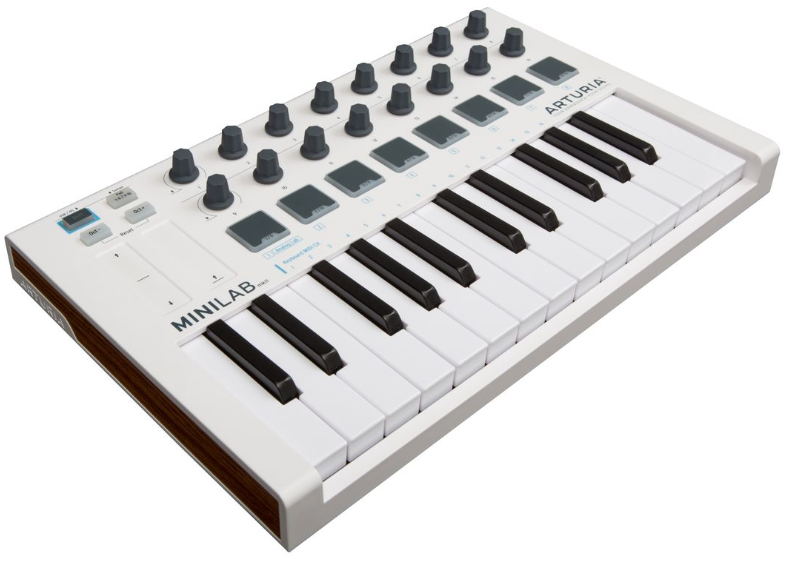
Figure 10: Arturia’s MiniLab Mk II has 25 velocity-sensitive keys, pads for playing percussive parts, and 16 rotary encoders for tweaking tone module parameters.
Types of Synthesis
Companies enjoy assigning proprietary names to synthesis processes, like “Advanced Amazing SuperDuper Synthesis” or whatever—but they’re just names. Here are the main types of synthesis engines.
- Analog synthesis. This is the original form of synthesis, and dates back to the early Moog and Buchla synthesizers that kicked things off in the 60s. Analog synthesizers are more expensive to manufacture, but are known for a certain purity of sound and are making a comeback. What’s most common is digital
 Definition:
Definition:
A signal or data expressed as series of the digits 0 and 1, typically represented by values of a physical quantity such as voltage or magnetic polarization. control with analog sound generators to you have the advantages of being able to control the synthesizer via MIDI, as well as store presets. Although analog synthesizers can imitate acoustic or electric instruments, their specialty is making “impressionistic,” synthetic sounds. - Virtual analog synthesis. With these synthesizers, digital sound generation creates sounds that emulate analog synthesizers but are generally more versatile, because they can extend beyond what traditional analog synthesizers do.
- FM Synthesis. This uses all-digital technology and has a clearer, brighter, less “warm” sound than analog synths. FM synthesis fell out of favor in the ’90s after years of overuse, but is making a tentative comeback in software synthesizers (like Native Instruments’ FM8) because it still provides useful, unique timbres.
- Sample-based synthesis (also called “ROMplers” because the first keyboards of this genre played sounds back from ROM
 Definition:
Definition:
(Read Only Memory) A non-volatile form of memory where its contents cannot be changed by the user. memory chips). Samples are recordings of actual instruments that are assigned to notes, which you then trigger Definition:
Definition:
A signal that starts an event. with the keyboard. While samples can create realistic instrument sounds, it can take more work to wring expressiveness out of what is essentially a “snapshot” of a sound. Pluck a physical string ten times; each time the sound will be subtly different. A sample gives the same sound every time. Various companies have figured out ways around this, like adding slight amounts of processing to one sample, or creating multiple samples for a note, and alternating among them depending on dynamics Definition:
Definition:
In a musical performance, changes in overall volume levels, often accompanied by timbral changes. Example: Classical symphonic music has a wide dynamic range, while dance mixes have a much narrower dynamic range.. Another improvement is adding synth-type circuitry to modify the samples. For example, a lowpass filter Definition:
Definition:
1. (audio) A circuit that reduces certain frequencies, e.g., a low-pass or high-pass filter for audio. See also: Equalizer. 2. (optics) reduces certain color wavelengths or polarizations. can reduce a sound’s high frequencies. If the filter frequency Definition:
Definition:
A value, expressed in Hertz, that indicates how many cycles of a periodic signal occur in one second. responds to the dynamics of your playing, then the sound can get brighter with loud notes, which is characteristic of many acoustic instruments. - This creates a computer algorithm
 Definition:
Definition:
A procedure a computer uses to solve a particular problem, or to produce a set of results based on data processed via this procedure. of an instrument, so technically it’s synthesizing a sound. However, the physics of brass, plucked strings, etc. are well known and if the model includes enough variables, it’s possible to obtain sounds that are essentially as realistic as sampling but aren’t limited to being “sonic snapshots.” Most virtual analog synthesizers use modeling. - All together now. Some keyboards combine multiple synth engines, typically sampling and modeling. Korg’s Kronos synthesizers takes this to an extreme, with nine different synthesis engines.
Main Keyboard Features
A keyboard’s spec sheet contains a huge number of terms, so let’s define some of the most important ones.
On-Board Sequencer
A sequencer records any keys you play and controller motions, so you can record and play back compositions. For songwriting, this can often get ideas down faster than a conventional recording setup. The most important specs are the number of tracks (typically 8 to 32), and the number of events the sequencer can store. Because an “event” can be a single note, a figure like 10,000 events might seem like a lot. But moving a modulation Definition:
Definition:
The process of one signal influencing a different signal, in real time. This can occur with radio frequencies (e.g., using audio to modulate a radio frequency carrier signal), audio frequencies (see: FM Synthesis and Ring Modulation), or sub-audio signals (see: LFO). wheel or lever from minimum to maximum might generate a hundred or more events, so the more events a sequencer can store, the better.
Polyphony
There will be a limited number of “voices” that can play back simultaneously (the reason for saying “voice” instead of “note” is because a voice may play back more than one note at a time, like a layered set of sounds assigned to the same note). Analog synthesizers can only play back a limited number of voices at a time, like 8 voices, but digital synths can produce 64, 128, 256, or even more voices. This might seem unnecessary, given that you have only ten fingers. But with a piano sound, notes sustain in the background, which uses up voices. Also, if there’s an onboard multitrack sequencer, more polyphony allows fuller arrangements by allowing more notes for each track.
Multi-Timbral Operation
This represents the number of different instruments or unique sounds that a keyboard can generate simultaneously. For example if a synth is 16-part multitimbral, then an onboard sequencer is likely to be able to play back 16 different instrument sounds simultaneously. Or if you plan to drive the synthesizer from a computer-based sequencer or digital recording program, then your computer can send notes to 16 different instruments. Most multi-timbral keyboards can play back 16 different sounds simultaneously—one for each of the standard 16 MIDI channels—but others may be able to play only a lesser number, or run out of available polyphony with dense arrangements.
Sample ROM
Sample-based synths often store their samples in non-volatile ROM chips (although some are now using hard drives). Generally, more ROM capacity means either more sounds to choose from, or better quality versions of a lesser number of sounds. Back in the day, four-megabyte sound ROMs used to be considered big—compare that to today’s keyboards, which can have gigabytes of onboard sounds.
Real-Time Controls
Almost all synths have a pitch bend wheel and modulation wheel or lever (the mod wheel Definition:
Definition:
Short for modulation wheel. A wheel-shaped controller on a synthesizer which when rotated from the off position, adds any modulation that's assigned to mod wheel control. might add vibrato Definition:
Definition:
A periodic variation in pitch., change tone, or perform other functions, depending on how the sound is programmed). However, home electronic pianos may have only a pitch bend wheel. More advanced keyboards can include other controllers like ribbon controllers (slide your finger along a ribbon strip to change a parameter value), data sliders, footpedal options, a joystick, etc.
Storage
Options for storing sounds and sequences vary. Many synths now include USB ports so storage can happen with USB thumb drives or hard drives, while others rely on a fixed amount of onboard storage.
Audio Recording
If the keyboard has a hard drive, and can sample, sometimes you can record tracks of vocals, guitars, etc., just like a computer-based hard disk Definition:
Definition:
A storage medium, typically applied to magnetic-based media (e.g., floppy disk, hard disk). recording system. This is also possible with some synths that are RAM-based but the technology doesn’t matter, because the results are the same: a keyboard that blurs the line between a musical instrument and recording studio.
Onboard Effects
Most keyboards include at least rudimentary effects like delay Definition:
Definition:
A device that outputs and input signal some time later. This can be short for echo effects, longer for matching speaker stacks, or aligning sound and video. and reverb Definition:
Definition:
Short for Reverberation. The myriad echoes of decaying amplitude created in an acoustic environment. Reverberation may be simulated electronically, mechanically using springs or a metal plate, or in a specially built physical chamber with reflective surfaces where a speaker sends audio into the chamber, and a microphone picks up the reflections., but some go much further, including multiple effects that can be used as insert, send, and master effects—just like a mixer Definition:
Definition:
Combiner, controller, and router for multiple audio or video signals..
How effects interact with the program or sequencer varies. Usually, you can store a particular effect Definition:
Definition:
A device or software program that modifies some aspect of audio or video. With audio, the term is used interchangeably with signal processor. or set of effects with a particular program. But suppose you have a sequence with multiple instruments, or a multi-timbral setup. Insert effects process individual tracks. Some keyboards also have master effects, which alter any audio, from any source, that appears at the output. Tone controls are good candidates for a master effect so you can, for example, brighten up the high end a bit or make the bass rumble Definition:
Definition:
A noise caused by mechanical vibrations being transferred to a audio transducer, such as a turntable motor.. Send effects (also called Aux effects) can add a particular effect to multiple channels of your choice, so they’re somewhere between insert and master effects in terms of how they process the sound.
Compositional Assistance
Arranger keyboards can often help you generate chord progressions, backing tracks, and the like—up to the point of creating complete arrangements. Sometimes you can even trigger these with one finger, or have the keyboard read what you play with your left hand, and base the accompaniment on your playing. A sophisticated algorithm called KARMA is built in to some Korg keyboards, and available as an add-on to selected Yamaha keyboards. It’s hard to explain, but basically, the keyboard analyzes your playing and adds enhancements where appropriate. For example, an acoustic guitar parts may have “strums” added in for a more realistic sound. Roland has also created a technology called SuperNatural, that adds expressiveness more characteristic of acoustic instruments. This type of “artificial intelligence” makes a difference in how inspiring an instrument can be, as it becomes more of a partner in the music-making process.
Arpeggiator
An arpeggiator Definition:
Definition:
A device or program that produces arpeggiation. It often includes the option to vary the order and rhythm with which notes are played. triggers notes sequentially in a pattern (sometimes arpeggiators are polyphonic Definition:
Definition:
The ability of an electronic musical instrument to play more than one note simultaneously., and can trigger several parallel patterns). For example, suppose you’re holding down a C Definition:
Definition:
A non-object-oriented, procedural, higher-level computer programming language than assembly language. major chord with the notes C4-E4-G4-C5. In “up” mode, these might play as C4-E4-G4-C5-C4-E4-G4-C5 etc. In down mode, it would do the reverse, playing C5-G4-E4-C4-C5-G4-E4-C4 etc. Other modes might be up/down, random, or extended, where the notes you hold down repeat over several octaves. Arpeggiators are used a lot in dance and “new age” music, and to add flourishes in just about any type of music.
Expandability
Expandability can help preserve your investment by allowing a keyboard to keep pace with technological changes. Here are some options you may find.
- Expansion card slots. Sample-based synths have a fixed complement of sounds. Adding cards expands this palette. Cards are typically genre- or instrument-specific (e.g., dance music, ethnic instruments, hip-hop, pianos, etc.).
- USB port. In conjunction with a computer, this can provide everything from file transfers between keyboard and computer to providing all the functions of a stand-alone MIDI interface
 Definition:
Definition:
A device that adds I/O capability to another device. Common would be a MIDI, audio or video interface for a computer. so a program running on the computer, such as a sequencer, can communicate directly with the keyboard. Sometimes these even provide audio interface functions, especially if the keyboard has an external input. - Audio input. This lets you send audio into your keyboard to provide signals your synthesizer can process, or record tracks into a sequencer (Fig. 11).

Figure 11: Yamaha’s MODX6 has an external audio input so you can process external signals through the keyboard’s effects. It also has USB ports for computer connections and external storage for presets and other data.
- Companion software. To simplify creating your own sounds, some keyboards come with editing software. This puts parameters on-screen and lets you edit them, which is often a faster and more direct approach than going through menu screens on the keyboard itself. What’s more, some software lets you treat the keyboard as a plug-in
 Definition:
Definition:
A software module, typically for signal processing or analysis, that inserts into the signal path of a DAW or video editor, or in some digital consoles. Also Plugin. within your DAW Definition:
Definition:
(Digital Audio Workstation): A computer program or stand-alone device that provides digital audio recording, editing, and mixing. (Fig. 12).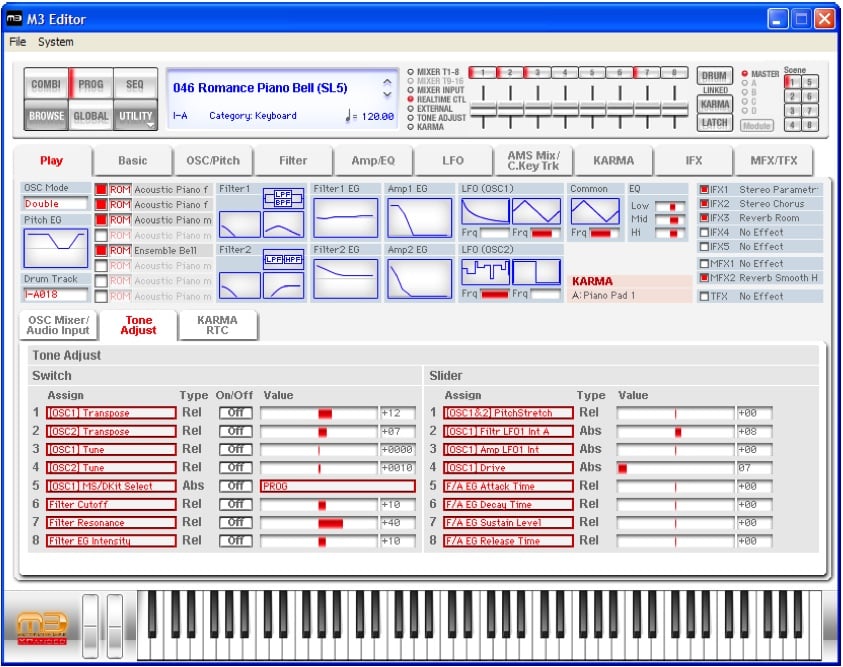
Figure 12: Korg's M3 was one of the first keyboards to include a sophisticated editor to make it easy to create sounds, but it could also be used as a plug-in within your DAW. Now many keyboards offer this kind of feature.
The Key Issue
Let’s close with the most important issue in choosing a synth: whether you have good chemistry with it. One of my favorite “vintage” synths is Peavey’s DPM-3, which ceased production almost three decades ago. It has a measly 16 voices, virtually no expansion options, and a user-hostile sequencer. But I get sounds with it that no other keyboard can produce, and it’s the “secret ingredient” in many of my tunes.
If you fall in love with a keyboard, trust your instincts. Remember, these are musical instruments, not just technological marvels. Some of the best synth parts ever recorded were played on a single-voice, non-multitimbral, non-expandable Minimoog. If you’re trying out a keyboard and it doesn’t inspire you, move on—even if it has the most amazing spec sheet you’ve ever seen.













